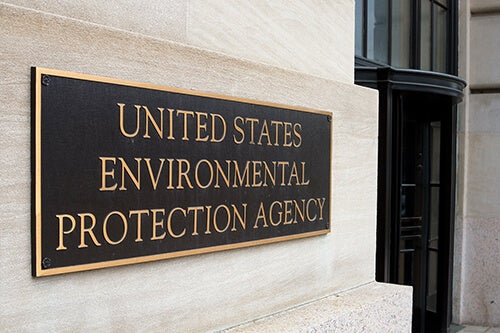The world’s supply chains — including yours — have a problem: They were never built with supply chain sustainability in mind.
Instead, manufacturing supply chains have traditionally focused on margins — on choosing the suppliers who can ship parts as quickly and cheaply as possible. But while decades of globalization and offshoring may have solved some problems, they introduced whole new levels of risk and made it more difficult for manufacturers to see into their supply chains.
Today, business priorities are changing:
- Regulators are rolling out mandatory sustainability reporting
- The public wants assurances that your products aren’t made with forced labor or hazardous chemicals
- Your customers need proof your goods are compliant
And for that, you need supply chain sustainability management (SCSM).
This article will help you understand SCSM is and show you how you can get started. Here’s what it will cover:
- What is supply chain sustainability management?
- Why do you need it? And why now?
- A blueprint for supply chain sustainability
- How Assent supports your SCSM journey
- Real world customer stories about SCSM in action
What Is Supply Chain Sustainability Management?
A proactive approach used to achieve lasting sustainability and reduce supply chain risk. It offers manufacturers like you a scalable method to action their responsible sourcing goals and leverages insights from their own data to meet product compliance and sustainability requirements.
That’s a big concept. Let’s break it down:
- Proactive: A proactive management approach focuses on having the data and processes in place to anticipate requirements and prepare for future goals. It means having best practices in place around transparency and supplier communication, rather than fixating on a specific report or data point.
- Lasting sustainability: Sustainability is a journey of continuous improvement. A supply chain sustainability management program differs from a one-time audit, for example, because it installs processes for ongoing supplier performance reviews and corrective actions.
- Manufacturers: Companies that manufacture products containing more than one component, and that typically have supply chains two or more tiers deep. Suppliers are critical to SCSM, as the vast majority of manufacturing’s impact and risk is in supply chain activities.
- Scalable: To be proactive, a program needs to be scalable and flexible. Processes can grow and adapt when regulatory requirements expand or you set new sustainability goals.
- Data insights: There’s a difference between just checking boxes in a regulatory report and gaining actionable business intelligence to help improve your operations. Supply chain sustainability management prioritizes data quality and helps you understand what that data really means.
- Product compliance and sustainability: Supply chain sustainability management breaks down the silos between your product compliance, trade compliance, and environmental, social, and governance (ESG) requirements. After all, each one relies on supply chain data. And from a regulatory standpoint, the two are converging (which we’ll explain in more detail next).
Why Do You Need SCSM? And Why Now?
Any business with a regulatory requirement or customers needs SCSM. And that means every manufacturer (including you) needs it.
Supply chain sustainability management protects your business from avoidable and preventable costs, such as compliance penalties, supply chain disruptions, and losing customers over sustainability concerns. It also gives you visibility into what goes into the parts and processes in your value chain so you can proactively stay ahead of future requirements. This is getting more important, as research suggests that up to 90% of your environmental impact is in your value chain.
You need SCSM because your requirements are getting stricter, customer expectations for sustainability data are higher, and the economy is growing more competitive. Your business requirements for product compliance and product sustainability are converging, and SCSM is core to keeping the lights on and production lines running.
Need proof? These are just the tip of the iceberg:
- Research from PwC that shows 76% of consumers would “discontinue relations with companies which treat employees, communities and the environment poorly”
- Thirty-four states have already introduced 292 policies to protect the public from per- and polyfluoroalkyl substances (PFAS), and that number is expected to increase next year
- Newer sustainability regulations like the Corporate Sustainability Reporting Directive (CSRD) are demanding more comprehensive supply chain sustainability data than ever before
- Institutional investors representing $25 trillion USD in assets are predicted to double their sustainable assets under management, according to research from BlackRock
- The EU’s Circular Economy Action Plan (CEAP) has introduced product sustainability requirements under the Ecodesign for Sustainable Products Regulation (ESPR)
Plus, a single sustainability shock, like discovering one of your deep-tier suppliers uses forced labor, can knock out 30–50% of your annual profits. That statistic may sound extreme, but just look at the impact of the U.S. Uyghur Forced Labor Prevention Act (UFLPA). Since it came into force in 2022, 4,524 shipments, valued at over $0.8 billion, have been denied entry into the U.S..
How Are Competitors Handling Supply Chain Sustainability Management?
Not every business actually has an SCSM program in place. In fact, we partnered with IndustryWeek to survey over 150 manufacturers, and the vast majority of them are still low-maturity. Here are some key findings:
- 76% are still in the planning or foundational stages of supply chain sustainability maturity
- Nearly 10% do not yet have any sustainability practices in place
- Less than a third are highly confident in the accuracy of their supply chain data
- Only 25% are highly confident their partners and suppliers can support their sustainability goals
Do any of these sound similar to your company? If yes, then you need to start prioritizing SCSM, because there’s an enormous opportunity for you to get ahead of your competition. If over three-quarters of the market is still taking baby steps, imagine how much further you can get ahead by taking one or two great strides in your SCSM program. It’ll be like taking candy from a baby — except the candy is market share and you don’t have to feel guilty about doing it.
What Goes Into an SCSM Program? And How Does Assent Make It Possible?
Let’s start with the bad news: There’s no cookie-cutter program out there that will take your supply chain sustainability program from zero to one hundred overnight. But we can give you a blueprint for what goes into a successful program.
Our methodology for SCSM is informed by over 200 combined years of regulatory expertise and boots on the ground experience leading compliance programs. We’ve taken all that knowledge and developed a comprehensive platform that automates each step of the SCSM process.
Here’s our blueprint for SCSM:
Evaluate Your Priorities & Stakeholders
The first step is to determine what specific outcomes you want from your SCSM program. The easiest place to start is your in-scope regulations. This will tell you which reports you need to generate, and which data types you’ll need to collect from suppliers.
Next, speak with other departments and ask how they use product or supply chain data. This typically includes roles like engineers, product designers, quality control, sustainability, and procurement. Don’t forget to consult executives like your general counsel, chief information officer, or chief risk officer. These groups will have parallel goals to yours, and can help you understand long-term tactical business goals.
Assent’s team of experts takes the guesswork out of the scoping and implementation process. They have designed and led programs across global manufacturing businesses, and are there to help you understand your requirements so you can onboard the solutions that make sense for your needs.
Proactive Regulatory Monitoring
A proactive approach to regulatory compliance is what separates a good SCSM program from bare-minimum, checkbox compliance.
By monitoring upcoming regulatory changes, including whether any substances have been added to existing regulations, you’ll be in the know about new data you’ll need to collect from suppliers — AND you’ll have enough runway to get it from them on time.
Proactive monitoring also applies to listening for market signals about potential risks. For example, 3M stopping PFAS production in 2025 is being driven by legal liability concerns rather than government regulations, but this change could have an enormous impact on your supply chain.
You can learn more about rising PFAS liability, including five steps to reduce your risk, by downloading our PFAS liability overview.
Assent ensures your program is up to date with the latest regulatory requirements. Because we keep tabs on global regulations for thousands of users, we can provide an economy of scale on monitoring that saves you significant time and money. Otherwise, monitoring in-house is a big time commitment and can distract from other compliance responsibilities.
Supplier Enablement
Once you’ve identified which regulations and requirements matter to your business, and you’ve established a process for proactive regulatory monitoring, it’s time to focus on positioning your suppliers to be compliance partners.
Because no matter how strong your internal processes are, you can’t achieve results without data from your supply chain. When you invest in the supplier experience, you’ll get higher-quality data and better response rates. And by setting suppliers up for success, you’ll get more productive time back to focus on business-critical projects.
Assent’s platform solution includes comprehensive supplier enablement:
- Training on applicable regulations and data requirements. When suppliers understand why you’re asking for a certain piece of information, it’s more likely they’ll provide more accurate data
- Dedicated supplier success managers to help with technical questions
- Surveys, forms, and educational materials available in their preferred language
- The Assent Sustainability Network connects you and your suppliers, making it easier to share product data. It’s the largest and fastest-growing supply chain data exchange, giving you rapid access to supplier and part information
- Streamlining and consolidating data requests from across your different departments to reduce supplier fatigue and repeat efforts
Supply Chain Data Collection
With your suppliers prepped and your goals clear, the rest is smooth sailing… right?

Collecting data from your supply chain can actually be the most time-consuming and laborious part of the process. When you’re doing it manually, it usually involves sending several emails (and reminder emails), calling suppliers, hoping you’re reaching the right person, and plugging data into a spreadsheet. And if you’re not in sync with other departments, you might all be doing this tedious process, which creates supplier fatigue and multiplies the cost to your company for each repeated effort.
Assent has solved the data collection issue by automating supplier outreach, streamlining your data requests into the absolute minimum number of surveys, and creating the Assent Sustainability Network.
Sound Data Management & Analysis
Manufacturing supply chains can produce a tsunami of information, and if you’re not prepared for it, all the value in that data can get washed away. A good SCSM program should provide a single source of truth for your entire organization, and it should be easy to find the data you need to respond to customer requests or generate regulatory reports.
This isn’t just about improving communication. You’ll make each connected team more productive by eliminating redundant tasks and speeding up key decision-making processes, like product design.
Beyond that, your system should be able to read the data and proactively flag potential compliance issues. For example, if you’re in scope of the Registration, Evaluation, Authorisation, and Restriction of Chemicals (REACH) Regulation, you’ll want to quickly see if any supplier declarations contain a substance of very high concern (SVHC).
Assent’s platform solution gives you that central place to store and see all your supply chain sustainability data, including what’s in your parts and any ESG information your suppliers have declared. We use human-assisted artificial intelligence tools to validate incoming data to ensure you’re collecting high-quality, relevant data.
Mitigating Supply Chain Risk
Assent’s SCSM platform provides dashboard views to quickly see your compliance or sustainability risks.
We provide supplier ESG scores to help you identify disruption risks. On top of that, we can also monitor media and third-party databases for risk signals that may slip through the ESG survey process — like forced labor, business ties to sanctioned parties, or media reports on working conditions. Our platform provides recommended corrective actions based on this ESG data, designed by our team of sustainability experts. It’s like having a PhD in sustainability, but without the student loans.
Supply Chain Sustainability Management in Action
Picture this:
- Your phone is ringing off the hook. It’s your boss, panicking about 3M pulling out of the PFAS market. They demand to know whether you’re buying PFAS from 3M and if that’s going to disrupt your production schedule. Because you’re tracking the PFAS in your supply chain with Assent’s SCSM platform, you can quickly pull up the data to assure them the company is not at risk. You’re a hero!

- Later that morning, a potential customer inquires whether your products are compliant with the Restriction of Hazardous Substances (RoHS) Directive. If you can’t deliver that data — as fast as possible — they’ll walk away from the deal. Using the Assent platform, you can quickly declare (and prove) your compliance and seal the deal. It’s too bad you don’t work on commission!
- After lunch, you overhear your sustainability officer complaining about how they’re spending up to 60% of their time maintaining the company’s conflict minerals reporting program, and now the board is asking for sourcing data on cobalt as well. They’re over the moon when you tell them the Assent platform can automate data collection for conflict minerals reporting AND extended minerals reporting. You just saved the company hundreds of thousands of dollars and made a new best friend!
These are all inspired by true stories from Assent customers (with a little dramatic flair added for your reading pleasure). You can read and watch their case studies to get all the real-world details.
Let’s Get Started
So now you understand what SCSM is, but more importantly, how it benefits your organization. And while SCSM is a big concept, you don’t have to try to do everything at once.
Assent makes it easier to know where to begin. Our experts will take the time to understand your business and assess your requirements. We help you onboard your most critical suppliers and scale your program up to cover emerging regulations. We’re with you at every stage of maturity, and we help you reach the next level faster.
There’s a lot on the line, between being able to sell your products in regulated markets, winning customers, and keeping your compliance costs low. Book a demo today.
SCSM FAQ
What is supply chain sustainability management (SCSM)?
Supply chain sustainability management (SCSM) is a proactive approach to achieving long-term sustainability and reducing risks in manufacturing supply chains. It focuses on transparency; compliance with environmental, social, and governance (ESG) requirements; and encouraging responsible sourcing practices.
Why is a continuous focus on SCSM critical?
Supply chain sustainability is a continuous journey and not a one-time effort. Companies need to commit to ongoing improvement and regularly reassess their strategies to keep up with evolving challenges. A new supplier, new regulation, or new customer can introduce a new set of sustainability risks that may require new processes. An outdated (or stagnant) program can put you at risk of falling out of compliance when new substances are added to a regulation, or impact your ESG rating.
Why is SCSM important for businesses today?
Supply chain sustainability management is vital because of increasing regulatory requirements, customer expectations, and competitive pressures. It helps manufacturers mitigate risks like compliance penalties, supply chain disruptions, and reputational damage while enabling better data-driven decisions and maintaining operational continuity.
Supply chain sustainability management must be integrated into the core business strategy and operations. This includes setting measurable goals, tracking progress, and making supply chain sustainability a reportable key performance indicator for the company.
What role do leaders and executives play in SCSM?
Supply chain sustainability management is not just the realm of compliance and sustainability professionals. Leadership plays a pivotal role in your SCSM program too. Executives must champion sustainability initiatives and embed this value at all levels of the organization.
Many companies make ambitious sustainability commitments, but struggle to implement the necessary changes to achieve them without leadership buy-in. Leaders can help an SCSM program overcome factors like lack of internal resources, difficulties in planning, and internal resistance to change.
What are the benefits of implementing SCSM?
Supply chain sustainability management provides numerous advantages, including:
- Protection against compliance penalties and reputational risks
- Increased supply chain transparency
- Scalability to adapt to new regulations and goals
- Enhanced product compliance and sustainability
- Competitive edge through proactive sustainability practices
Why is transparency vital in an SCSM program?
Regular, honest updates about supply chain sustainability help build trust with your stakeholders and demonstrate a genuine commitment to sustainability. That means your organization needs to be open about successes and failures. Communication with stakeholders is key; engaging stakeholders and customers in two-way conversations helps you understand their expectations.
Aligning actions with stated commitments is important to help you avoid greenwashing. Greenwashing is when companies overstate or misrepresent their sustainability efforts to artificially boost their brand. Being accused of greenwashing not only damages your reputation but also erodes public trust in sustainability initiatives more broadly.
How can businesses begin implementing SCSM?
- Evaluate priorities and stakeholders: Define specific goals and regulations that must be addressed.
- Enable suppliers: Provide training and resources for accurate data sharing.
- Collect and manage supply chain data: Use automated tools to gather and analyze relevant information.
- Monitor regulations proactively: Stay ahead of new and changing compliance requirements.
What risks do companies face without SCSM?
Without SCSM, businesses risk:
- Compliance penalties due to regulatory violations
- Supply chain disruptions from unforeseen sustainability issues
- Losing customers and market share due to poor sustainability practices
- Reputational damage from forced labor, hazardous chemicals, or ESG non-compliance in their supply chains, among other risks













